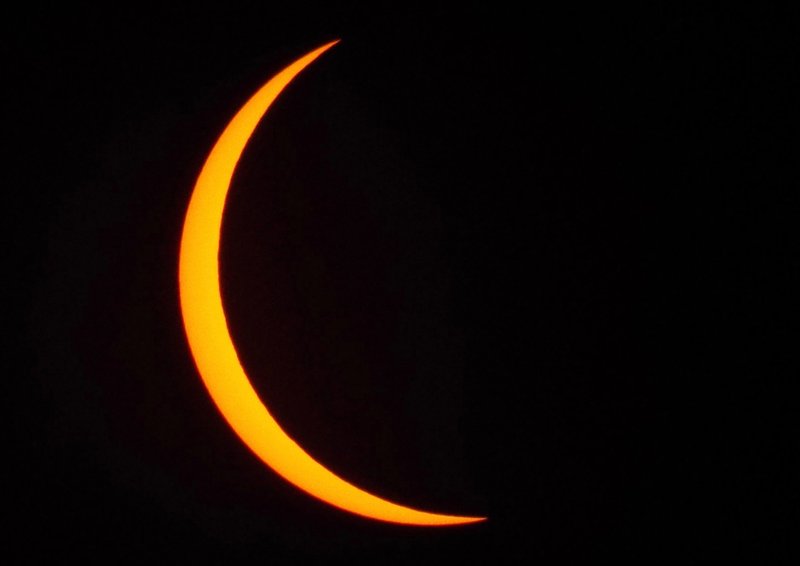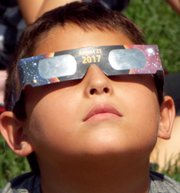GENTRY — Students gathered outside of Gentry classrooms on Monday, donned with special filtered glasses, to watch the solar eclipse (one child called it a solar apocalypse) come and go without cataclysmic events. A few brought homemade pinhole viewing boxes (similar to pinhole cameras) for safe viewing.
Different from a lunar eclipse in which the shadow of the earth darkens the moon, a solar eclipse occurs when the moon passes directly between a part of the earth and the sun, blocking out a portion or all of the sun.
Even though Monday's eclipse was only a partial eclipse, the afternoon grew noticeably darker during the event.
The eclipse could be viewed locally for about three hours, from about 11:40 a.m. until 2:40 p.m. The maximum eclipse was close to 1:15 p.m., with about 90 percent of the sun blocked from view by the moon. The total eclipse, with the corona visible, could be viewed further north, near St. Joseph, Mo.
The accompanying photos were taken in Gentry with a homemade filter constructed from the same safety glasses children used at the schools. One lens was cut from the glasses and attached to a cardboard disk placed over the lens to keep unfiltered sunlight from entering the camera and possibly damaging the image sensor.
And for those who missed it, the next solar eclipse in the U.S. will be on April 8, 2024.
General News on 08/23/2017


